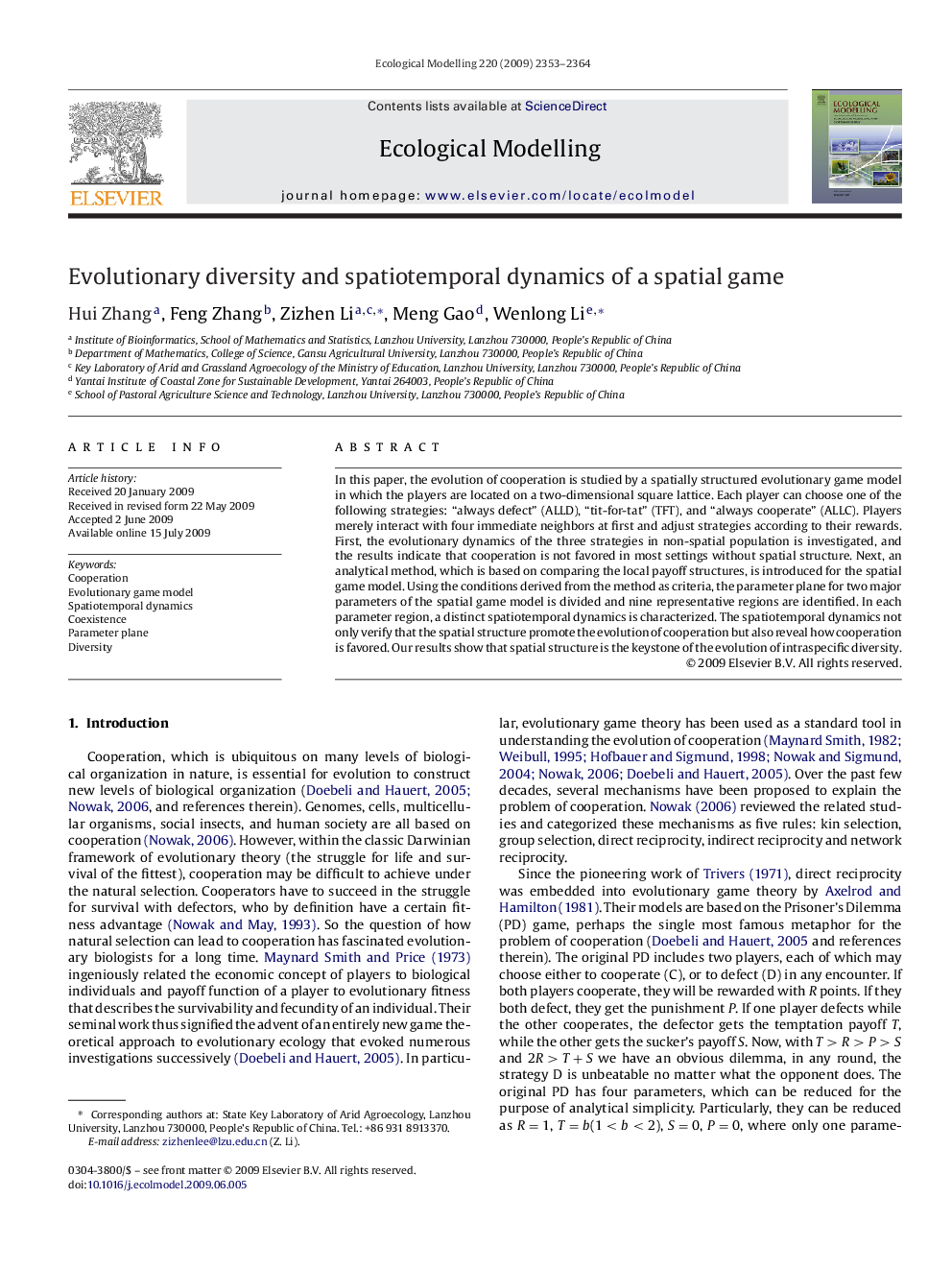| کد مقاله | کد نشریه | سال انتشار | مقاله انگلیسی | نسخه تمام متن |
|---|---|---|---|---|
| 4377654 | 1303439 | 2009 | 12 صفحه PDF | دانلود رایگان |

In this paper, the evolution of cooperation is studied by a spatially structured evolutionary game model in which the players are located on a two-dimensional square lattice. Each player can choose one of the following strategies: “always defect” (ALLD), “tit-for-tat” (TFT), and “always cooperate” (ALLC). Players merely interact with four immediate neighbors at first and adjust strategies according to their rewards. First, the evolutionary dynamics of the three strategies in non-spatial population is investigated, and the results indicate that cooperation is not favored in most settings without spatial structure. Next, an analytical method, which is based on comparing the local payoff structures, is introduced for the spatial game model. Using the conditions derived from the method as criteria, the parameter plane for two major parameters of the spatial game model is divided and nine representative regions are identified. In each parameter region, a distinct spatiotemporal dynamics is characterized. The spatiotemporal dynamics not only verify that the spatial structure promote the evolution of cooperation but also reveal how cooperation is favored. Our results show that spatial structure is the keystone of the evolution of intraspecific diversity.
Journal: Ecological Modelling - Volume 220, Issue 19, 10 October 2009, Pages 2353–2364